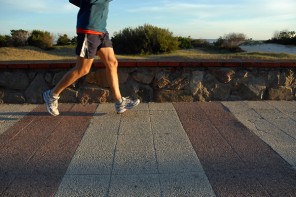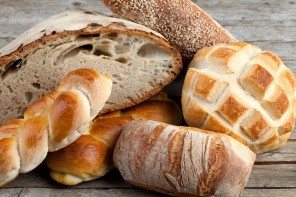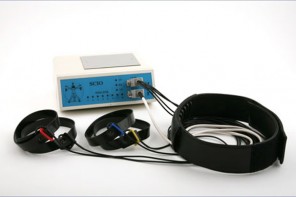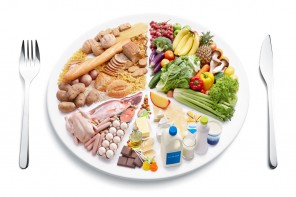It seems like the trend to cut out gluten and wheat has reached an all-time high. Magazines are flooded with articles and recipes and our grocery stores are giving an increasing amount of space to gluten and wheat-free food items.
While some people are cutting out gluten and wheat due to necessity (people who suffer from Celiac disease and gluten intolerance can’t eat these items), not all people who are cutting out gluten and wheat are actually allergic to these foods. According to the most common cited statistics on Celiac disease, approximately 1 in 133 people suffer from gluten intolerance (while only in 4,700 have received an official diagnosis).
Whether you’ve received an official diagnosis or you’re just interested in what this type of diet can do for you, it’s good to know that many devout followers of this diet are claiming that there are quite a few benefits that you can experience after following this way of eating for a while. But first, a quick overview on the definition of gluten and wheat and how this fits into your current diet:
Gluten is the elastic form of protein within wheat. Gluten is formed when water is added to flour. While many people are open to the idea of cutting out gluten and wheat, they often become disdained when they realise how many of their daily food items contain these ingredients. If you’re not intolerant to wheat and gluten, then you can focus on cutting down without eliminating these ingredients completely. Gluten is found in wheat, oats, barley and rye, which means it’s in most (if not all) breads, biscuits, cakes, pastries, breakfast cereals, pasta, beer and most soups. If you have a wheat intolerance (or just want to cut out wheat), you can still eat oats, barley and rye products.
Wheat alternatives include bread made from rice flour, pasta made from rice (or corn) flour, digestive and maize biscuits, mueslis made from corn flakes / rice flakes / banana chips and dried fruits.
It’s not wheat, it’s “Frankenwheat”
According to dieticians and doctors who follow the wheat-free diet, wheat itself has changed a lot over the years – it’s not exactly the same crop that was grown 100 years ago. Basically, it’s shorter and it can support a heavier seedbed, thanks to the modifications that have been made to help make agricultural products more resistant to drought. The result is that our bodies aren’t digesting it the same way. Some people end up with digestive issues, belly fat, skin problems like acne, eczema and rashes, which are said to be caused by wheat. Leading neurologists have been quoted saying that wheat can lead to headaches (and can even be contributing to serious conditions like dementia and depression).
Unfortunately, switching to “whole grain” or “100% whole wheat” isn’t the answer either, as many of these foods will actually spike your blood sugar levels faster than sweets can. Even though food manufacturers want you to believe they’re selling you a complex carbohydrate, they’re really not.
William Davis, the New York Times best-selling author of Wheat Belly (one of the most popular books on the subject), has spoken about the criticisms of eliminating wheat – which is essentially an entire food group – from your diet. “Grains were a mistake in the first place. Grains were never intended to be such a large part of our diet. Wheat has a long shelf life and it makes financial sense to people who are making and selling food. But are you eating for your health or for corporate bank accounts? We’re told to have a diet that’s dominated by grains, but it’s about money, it’s not about our health,” says Davis.
According to Davis, wheat makes you fat because it contains amylopectin A, which converts to blood sugar very quickly and easily (more efficiently than any other carbohydrate or even table sugar). Two slices of whole wheat bread will make your blood sugar spike more quickly than a chocolate bar. After two hours, you’re blood sugar level crashes and you feel tired, foggy and hungry – which means you need to eat again. Davis claims that when you stop eating wheat, you don’t have these extreme highs and lows (and you won’t feel the need to graze all day).
These types of diets have received a lot of media attention over the past 12 months. In the United States alone, the gluten-free market is valued at $4.2-million and climbing. A landmark study by researchers at Dalhousie University in Halifax in 2008 revealed that gluten-free foods were, on average, 242% more expensive than their “regular” counterparts. Rice Krispies has also re-worked its original recipe (that dates back to 1927) to remove barley malt – which is the source of gluten in the original recipe – so they can advertise it as a “breakfast cereal that’s easy for kids to digest”. In America, there’s even a gluten free dating website, uniting people who are fighting the good “dough-based” fight and Gwyneth Paltrow doesn’t allow her kids to eat gluten.
Removing wheat and gluten from your diet completely can help you lose weight (in this way, it’s pretty much the same as the Atkins diet), but this doesn’t mean it’s advisable to replace your food with all the processed “gluten-free” processed food available on the market. As a popular bodybuilding blog recently wrote: “Gluten-free crap is still gluten-free crap”. If you cut back on wheat and gluten and notice that you’re feeling much better, it’s a good idea to get tested to find out if you’re intolerant to these foods. Sticking to William Davis’ list of “allowed foods”, however, probably won’t be possible for most people.
List of things you can eat:
Vegetables
Cheese
Oil
Eggs
Raw nuts
Uncured Meats
Non sugary condiments
Ground flaxseed
Avocado
Olives
Coconut
Pickled vegetables
Raw seeds
Herbs and spices
Image here










